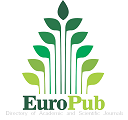Characteristics of Quail Carcass and Non Carcass Fed A Diet with Black Soldier Fly Maggot Flour
Abstract
Feed is a crucial factor in enhancing quail (Coturnix-coturnix Japonica) productivity. A Frequently used protein source in quail feed is Meat Bone Meal (MBM). However, MBM is an imported product, making it relatively expensive. An alternative to MBM is utilizing locally sourced feed ingredients, such as black soldier fly maggot. This study aims to evaluate the characteristics of quail carcasses and non-carcass components from quails fed a diet containing black soldier fly maggot meal. The observed variables include slaughter weight, carcass weight, and its percentage, non-carcass weight and its percentage, commercial cut weight, and carcass percentage, as well as the weight and proportion of both edible and non-edible carcass components. The quail hens used in this study were aged 44-50 weeks and in their laying period. The research process included producing and managing black soldier fly maggot meal, preparing feed, setting up and maintaining cages, slaughtering, as well as cutting and deboning the carcasses. The treatment applied was R0 (feed with the primary protein source being MBM) and R1 (feed with the primary protein source of black soldier fly maggot). The collected data were analyzed using a two-sample t-test. The result showed that quail fed with black soldier fly meal as the primary protein source had no significant impact on slaughter weight, carcass and non-carcass percentage, commercial cut percentage, or the proportion of edible and non-edible parts. The conclusion of this study is that maggot can be used as an alternative protein source in feed as a substitute for MBM because quails fed with black soldier fly maggot flour as th eprimary protein source produced carcass and non carcass characteristics similar to those of quails fed with MBM as the main protein source.















